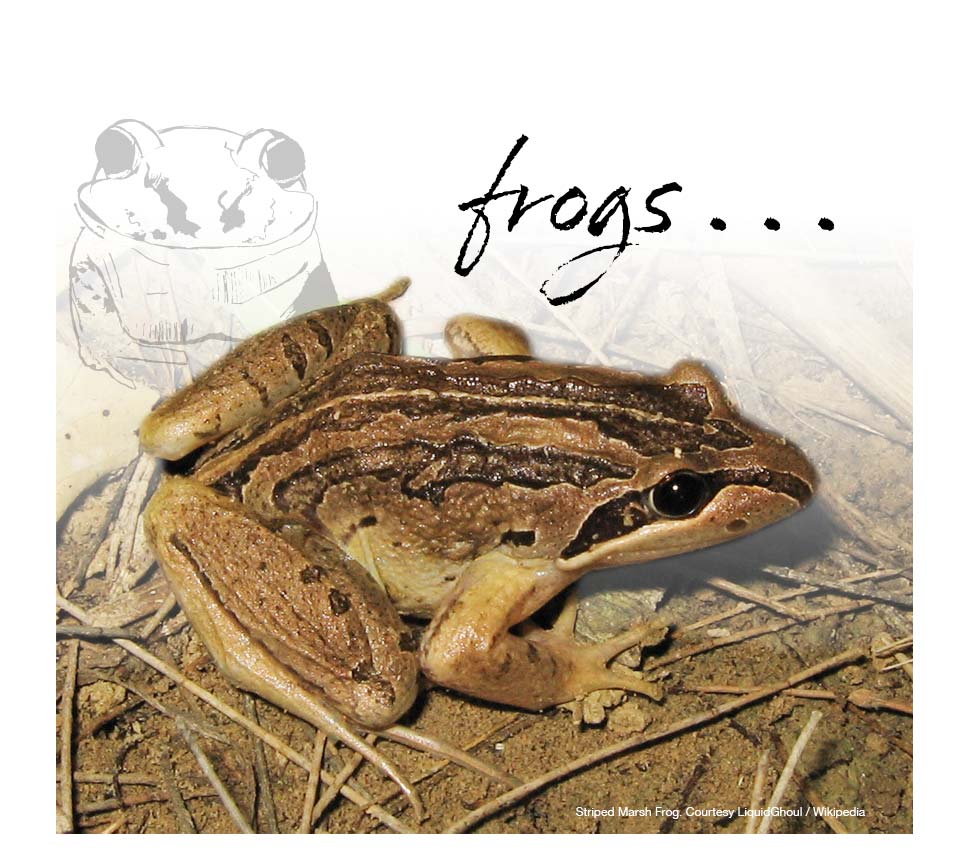Frogs have often received a bad rap in the past through their associations with low lying swampy ground alongside urban areas.
Typically these were the places that became the open cesspit of all the untreated effluent draining into them and remarkably species like the striped marsh frog were still able to survive there.
Its distinctive call is a loud 'tok' or 'whuck', which sounds very much like a tennis ball being struck. When associated with the appalling stench that surrounded urban swamps in the 1800s, this meant frogs were commonly left with something of an image problem.
Today however frogs are making a comeback in the public mind. Frogs eat insects. Overall they account for the vast daily consumption of pest species like mosquitoes. They also eat other small invertebrates and play an important role in maintaining the balance of nature.
But something is happening to the environment, both within Australia and internationally, that is alien to frogs. In the 21st century frog populations have declined dramatically, even in supposedly uncontaminated environments such as national parks. Something in the environment is killing the world's frogs.
Frog decline gives us a warning that environmental changes are taking place and that it is in our own interests to take heed of this potential tragedy.




